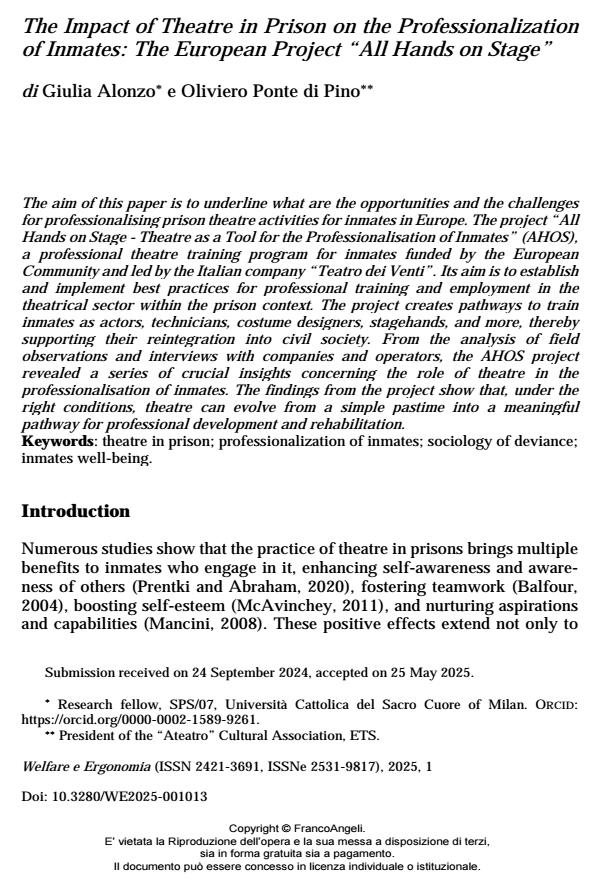The Impact of Theatre in Prison on the Professionalization of Inmates: The European Project “All Hands on Stage”
Journal title WELFARE E ERGONOMIA
Author/s Giulia Alonzo, Oliviero Ponte di Pino
Publishing Year 2025 Issue 2025/1
Language English Pages 12 P. 221-232 File size 87 KB
DOI 10.3280/WE2025-001015
DOI is like a bar code for intellectual property: to have more infomation
click here
Below, you can see the article first page
If you want to buy this article in PDF format, you can do it, following the instructions to buy download credits

FrancoAngeli is member of Publishers International Linking Association, Inc (PILA), a not-for-profit association which run the CrossRef service enabling links to and from online scholarly content.
The aim of this paper is to underline what are the opportunities and the challenges for professionalising prison theatre activities for inmates in Europe. The project “All Hands on Stage - Theatre as a Tool for the Professionalisation of Inmates” (AHOS), a professional theatre training program for inmates funded by the European Community and led by the Italian company “Teatro dei Venti”. Its aim is to establish and implement best practices for professional training and employment in the theatrical sector within the prison context. The project creates pathways to train inmates as actors, technicians, costume designers, stagehands, and more, thereby supporting their reintegration into civil society. From the analysis of field observations and interviews with companies and operators, the AHOS project revealed a series of crucial insights concerning the role of theatre in the professionalisation of inmates. The findings from the project show that, under the right conditions, theatre can evolve from a simple pastime into a meaningful pathway for professional development and rehabilitation.
Keywords: theatre in prison; professionalization of inmates; sociology of deviance; inmates well-being.
Giulia Alonzo, Oliviero Ponte di Pino, The Impact of Theatre in Prison on the Professionalization of Inmates: The European Project “All Hands on Stage” in "WELFARE E ERGONOMIA" 1/2025, pp 221-232, DOI: 10.3280/WE2025-001015